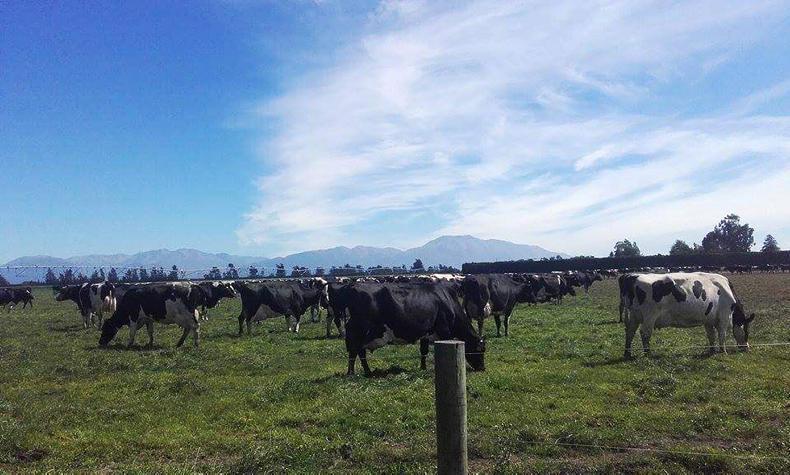The latest figures from the Dairy Companies Association of New Zealand (DCANZ) show that milk collections in February were down 2.9% on last year, totalling 1.91m t.
This represents a 1.3% fall in the three-year average, but a 1.1% ahead of the five-year average.
For the first two months of this year, there were 4.32 m t collected, which is a 1.7% fall on last year.
Collections for the New Zealand season, which runs from June to February, is down almost 3%, standing at 17.18 m t.
Milk solids on the up
Milk solids, however, recorded growth in February. Allowing for the extra day in February 2016, milk solids were 3.3% ahead of last year at 171.17m kgMS, with improved weather and good grass growth causing the rise.
It comes four months after a 6.2% fall in October, which is New Zealand’s peak milk producing month, as heavy rainfall halted spring grass growth.
This increase puts milk solid collections 0.39% ahead of the three-year average for the month.
For the season, collections now stands at 1,445m kgMS, which is a 2.6% decline on last season and the smallest deficit recorded since September.
Meanwhile, Fonterra, the world’s largest dairy exporter which is based in New Zealand, announced last week a 5% increase in revenue, rising to $9.2bn. It ended the first half of its 2017 financial year with net profit after tax up 2%, reaching $418m.
Australia also seeing declines
Elsewhere, Australia also recorded further falls in milk collections last month, dropping 10% to 625.6kt. A decline was also seen in January, with a fall of almost 6%. Collections from July, which is the beginning of the season in Australia now total 6.55m t, down 8.38% on the 7.15m t collected by the same point last season.
In the European market, however, milk production is expected to continue expanding this year, rising 0.6% above 2016 levels.
Read more
Farmers receive €6.5m milk reduction scheme money
’Disastrous’ Brexit to threaten liquid milk supply
The latest figures from the Dairy Companies Association of New Zealand (DCANZ) show that milk collections in February were down 2.9% on last year, totalling 1.91m t.
This represents a 1.3% fall in the three-year average, but a 1.1% ahead of the five-year average.
For the first two months of this year, there were 4.32 m t collected, which is a 1.7% fall on last year.
Collections for the New Zealand season, which runs from June to February, is down almost 3%, standing at 17.18 m t.
Milk solids on the up
Milk solids, however, recorded growth in February. Allowing for the extra day in February 2016, milk solids were 3.3% ahead of last year at 171.17m kgMS, with improved weather and good grass growth causing the rise.
It comes four months after a 6.2% fall in October, which is New Zealand’s peak milk producing month, as heavy rainfall halted spring grass growth.
This increase puts milk solid collections 0.39% ahead of the three-year average for the month.
For the season, collections now stands at 1,445m kgMS, which is a 2.6% decline on last season and the smallest deficit recorded since September.
Meanwhile, Fonterra, the world’s largest dairy exporter which is based in New Zealand, announced last week a 5% increase in revenue, rising to $9.2bn. It ended the first half of its 2017 financial year with net profit after tax up 2%, reaching $418m.
Australia also seeing declines
Elsewhere, Australia also recorded further falls in milk collections last month, dropping 10% to 625.6kt. A decline was also seen in January, with a fall of almost 6%. Collections from July, which is the beginning of the season in Australia now total 6.55m t, down 8.38% on the 7.15m t collected by the same point last season.
In the European market, however, milk production is expected to continue expanding this year, rising 0.6% above 2016 levels.
Read more
Farmers receive €6.5m milk reduction scheme money
’Disastrous’ Brexit to threaten liquid milk supply






 This is a subscriber-only article
This is a subscriber-only article










SHARING OPTIONS: